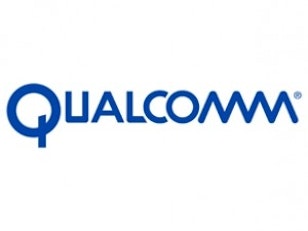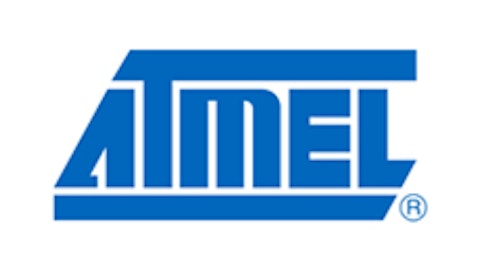Google Inc (NASDAQ:GOOG) just announced the release of the Moto X. Finally, we get our first glimpse at what Motorola has been up to since Google Inc (NASDAQ:GOOG) bought it out.
The Moto X

Source: The Next Web
Motorola believes in the Moto X. At first glance, the device appears to be minimalistic. It doesn’t come jam-packed with features, as it runs the stock Android operating system.
The device comes with Android 4.2.2. The Android version matters, because certain applications require a certain version Android. For example, Instagram Video is only available on smartphones running Android 4.1 and up.

The price of the Moto X is $199 on a post-paid plan (basically, a two-year contract).
Let’s get critical
If this is the best product that Google Inc (NASDAQ:GOOG) can come up with, it has failed. The new iOS 7 operating system and the unparalleled retail distribution of Apple Inc. (NASDAQ:AAPL) are going to crush Motorola. All of the foot traffic that’s going to pass by the Apple Store this coming holiday season will see the company’s multitude of releases. The next generation iPad, next generation iPhone, and (if the rumor of Apple Inc. (NASDAQ:AAPL) iPhone Lite is true) the iPhone Lite product line will pop up too. Apple Inc. (NASDAQ:AAPL) is notorious for generating excitement for its products and services that Google Inc (NASDAQ:GOOG)/Motorola simply does not have.
Not only has the imagery of owning a Motorola product not changed, the product specifications of one haven’t improved by much either.
In summary, the engineering team debated the size of the screen and talked about standardizing the phone to match the standard Google Inc (NASDAQ:GOOG) operating system. Motorola positioned its manufacturing facility in Texas, which equates into rising costs of development and zero return from innovation.
You might as well shelf the team that came up with this. It’s merely a mid-level device that’s priced at the high-end. If I wanted a blue phone, I would buy one from Samsung. If I want a red phone, I’d buy one from Nokia. The idea that the color of a phone would influence purchasing decisions has got to be a joke.
Google should be fine
The good news is that Motorola isn’t a large component of Google Inc (NASDAQ:GOOG)’s revenue. Over the first half of 2013, Google’s advertising and application business earned $13.1 billion. The Motorola segment generated $998 million over the same period, meaning that Motorola represents less than 10% of Google’s revenues.
The bad news comes from Motorola’s lack of contribution to net profit. The company’s aging patents and other assets have to be depreciated. So, even if Motorola is doing great in terms of cash flow, the company has to replace assets on an ongoing basis. What’s difficult about owning a technology company is that long-term assets often get reclassified because their market value goes down significantly. This is why Verizon and AT&T are cash flow rich, but net income poor. Depreciation on aging cell towers leads to massive write downs (we went from non-existent cellular Internet to 4G LTE within a decade, after all). Long-term assets aren’t really “long term” in the world of technology.
Motorola is a financial and balance sheet liability, but thankfully owning Google Inc (NASDAQ:GOOG) was never about hardware. It was always about advertising revenue.
Qualcomm’s mid-level still has strength
What’s interesting is that there’s ongoing demand for QUALCOMM, Inc. (NASDAQ:QCOM)’s mid-level systems on a chip. Qualcomm reported that it shipped 246 million chips in the first quarter of 2013.
I don’t have the exact pricing of a Snapdragon processor, but according to QUALCOMM, Inc. (NASDAQ:QCOM)’s earnings transcripts the average selling price for the chips was around $13. The price point is so ridiculously low that Intel and every other mobile semiconductor cannot compete with Qualcomm.
Intel isn’t expected to generate much growth from mobile as it would have to be competitive on both price and product. Currently, Intel doesn’t have as fast of a release cycle for mobile chips as QUALCOMM, Inc. (NASDAQ:QCOM) does nor does it offer as extensive of a product line. The low gross margins would only hurt Intel, not help it.
Conclusion
What’s interesting is that I don’t see a single Intel chip going into the Motorola. For now, QUALCOMM, Inc. (NASDAQ:QCOM) is the reigning king of mobile CPUs and CDMA/GSM technologies.
The Moto X fell below expectations. There was nothing significantly unique about it that would make someone want to buy it. The Texas facility will become empty unless if the company releases a more compelling product. For now, I’m going to let the buck stop here in Texas, and bank on the Apple team from Cupertino, California.
The article The Moto X: Not Good Enough originally appeared on Fool.com and is written by Alexander Cho.
Alexander Cho has no position in any stocks mentioned. The Motley Fool recommends Apple and Google. The Motley Fool owns shares of Apple, Google, and Qualcomm. Alexander is a member of The Motley Fool Blog Network — entries represent the personal opinion of the blogger and are not formally edited.
Copyright © 1995 – 2013 The Motley Fool, LLC. All rights reserved. The Motley Fool has a disclosure policy.





